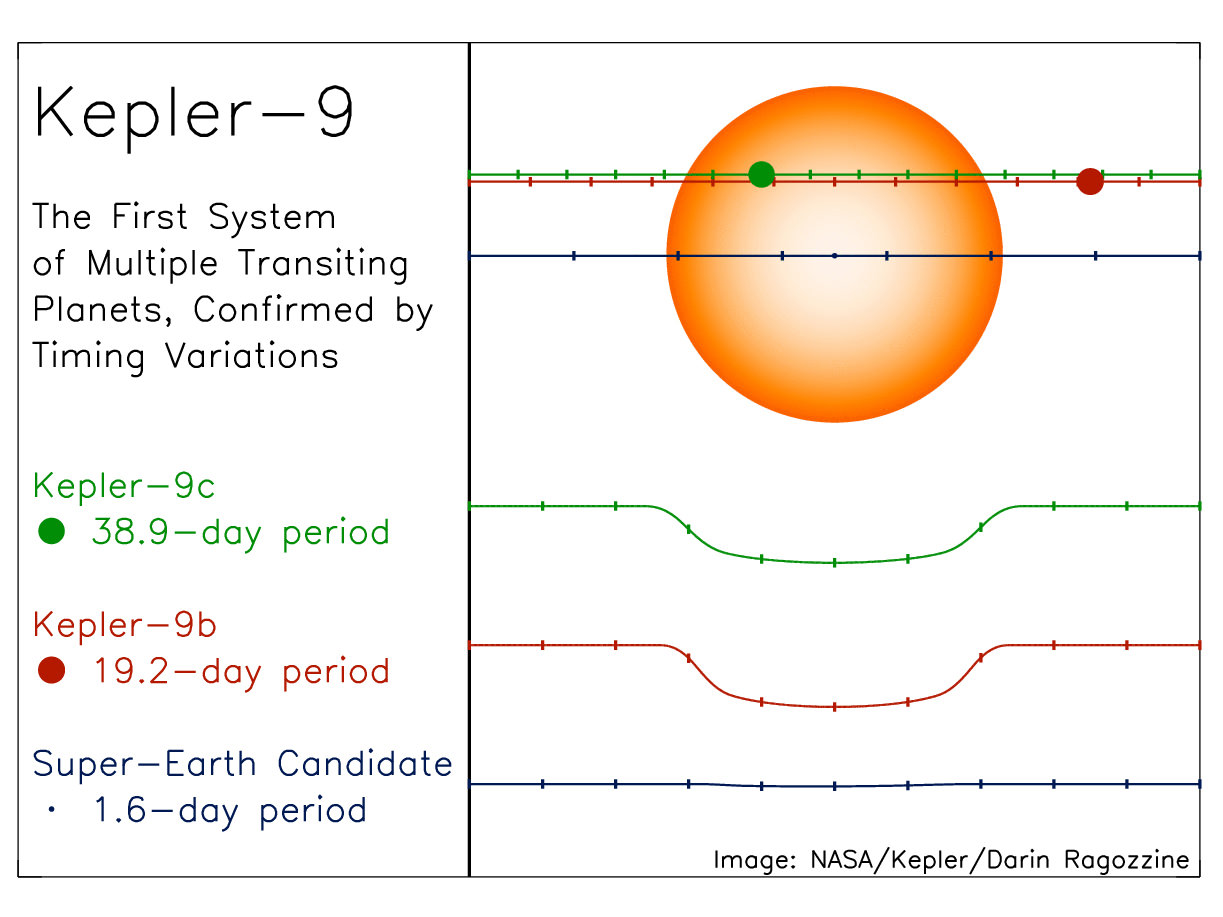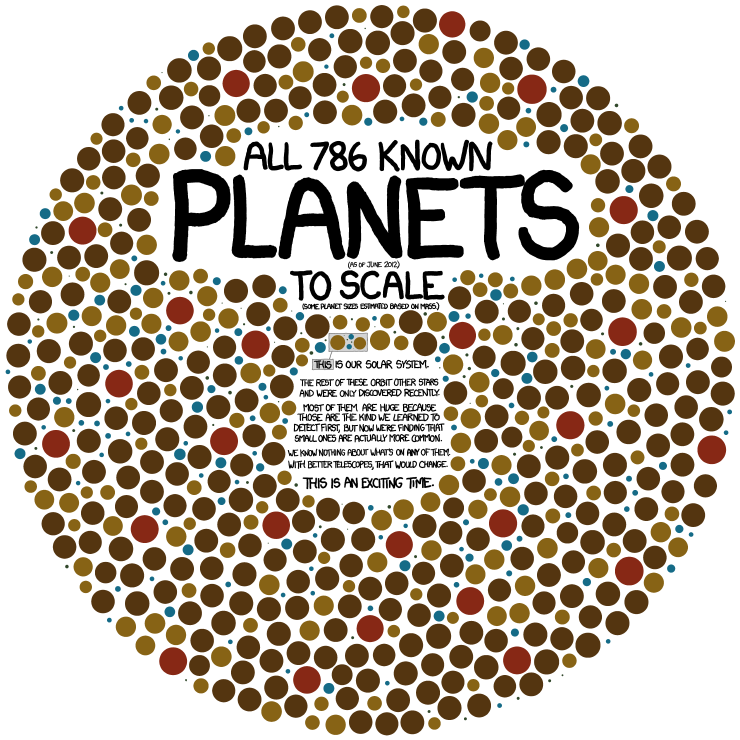Two weeks ago I gave a talk at
TED Global 2010 which was very well received, but caused confusion. I referred to past results from the NASA
Kepler mission. Indeed,
Kepler has not discovered Earth-like planets in habitable zones. We have not found Earth-size planets; at this time we have found only planet
candidates - 706 of them as of June 15, 2010, based on only 43 days of data with 306 released and discussed in a
paper by the
Kepler team. Planet candidates are just that: "candidates". A sizable fraction will turn out not to be planets, and we do not know what that fraction is yet.
So that was my challenge -
Kepler measures planet sizes, while I wanted to talk about geochemistry. In just 18 minutes. So, the expected number of planets, size and Earth-like chemistry got confused, and created a misunderstanding.
The family of our Solar System planets seems simple when sorted by size: half of the planets are large (giants) and half of the planets are small (terrestrial). The giants contain a lot of light gases (hydrogen and helium) in their bulk composition while the terrestrial ones contain mostly heavier elements. Too much hydrogen and helium dilute the surface chemistry, while heavy elements and solid surfaces tend to concentrate it. There is one planet in our Solar System where the chemistry has evolved to biochemistry and to a biosphere. In the search for life beyond Earth, the smaller planets are thus the favorite places to look.
The
Kepler mission is designed to discover Earth-size planets by detecting and measuring their transits. The
Kepler team collects additional information as it works to confirm a planet discovery, but one essential physical parameter
Kepler provides is SIZE, the planetary radius. However, is "Earth-size" the same as "Earth-like"? And vice versa?
Kepler is capable of finding Earth-size planets in orbits of moderate temperatures. But most people consider the term “Earth-like” to mean that the planet has an atmosphere, liquid water on its surface, and a temperature conducive to life. In other words, "Earth-like" is often used to mean 'habitable'. Therefore, Earth-size and Earth-like are certainly not the same. Take the example of Venus, an Earth-size planet whose surface will melt lead.
The term "Earth-like" planet creates confusion. To some scientists like me, who model planet interiors, the term "Earth-like" is a simple short-hand for a bulk composition like Earth's. It emphasizes the broad difference between gas giants and terrestrial planets, as seen in our Solar System. However, I understand that this is not how it was interpreted by the majority of the
media coverage. My definition allows for a whole range of planet sizes to be "Earth-like" planets. Thus, the question - what size planets might be "Earth-like"?, is more interesting. According to my definition, it involves the so-called "super-Earths" - planets larger in size and mass than the Earth, yet smaller than the giant planets. Many super-Earths are expected to have the same properties and potential for life as habitable Earth-size planets.
Kepler planetary candidates, like the 306 released this past June 15th, have estimated orbits and sizes. Sorted by apparent size, the majority of the candidates are found to be Neptune-size and smaller. This is the good news. As of today none of the candidates smaller than 2 Earth radii is in the habitable zone; their orbits are too small, which is why it was easier to spot them after just 43 days. Habitable planets will take a lot more time, as
Kepler needs to observe more than one transit.
The first data release is an encouraging first step along the road to
Kepler's ultimate goals, specifically, to determine the frequency of Earth-size planets in and near the habitable zone. However, these are candidates, not systems that have been verified sufficiently to be considered as planets. The distribution of planet sizes may also change. It will take more years of hard work to get to our goal, but we can do it.
The TED Global conference is about ideas worth spreading to a general audience. In my TED talk I decided to discuss the idea that science seems to be at the threshold of a new revolution - of synthetic biology. Ironically, this is happening at the completion of the previous, Copernican, revolution. My point was that the two events are related, and that, tantalizingly, progress in synthetic biology may be accelerated by input from planetary science. This is the core of the project I lead and we call the Origins of Life Initiative (not associated with the
Kepler Mission).
The Origins of Life Initiative makes connections between geochemistry and biochemistry. The
Kepler mission helps our project by establishing feasibility: if solid planets are common, then we have a shot at trying our lab experiments. This works as long as the planets have geochemical cycles that determine their atmospheric signatures. Hence, planets somewhat larger than Earth are more favorable (Sasselov & Valencia, Sci. American, Aug 2010). The Drake equation gives us an estimate of about 100 million such planets with habitable potential in the Milky Way galaxy.
Kepler has not yet weighed in on this yet, but holds the potential to do so in the future.



